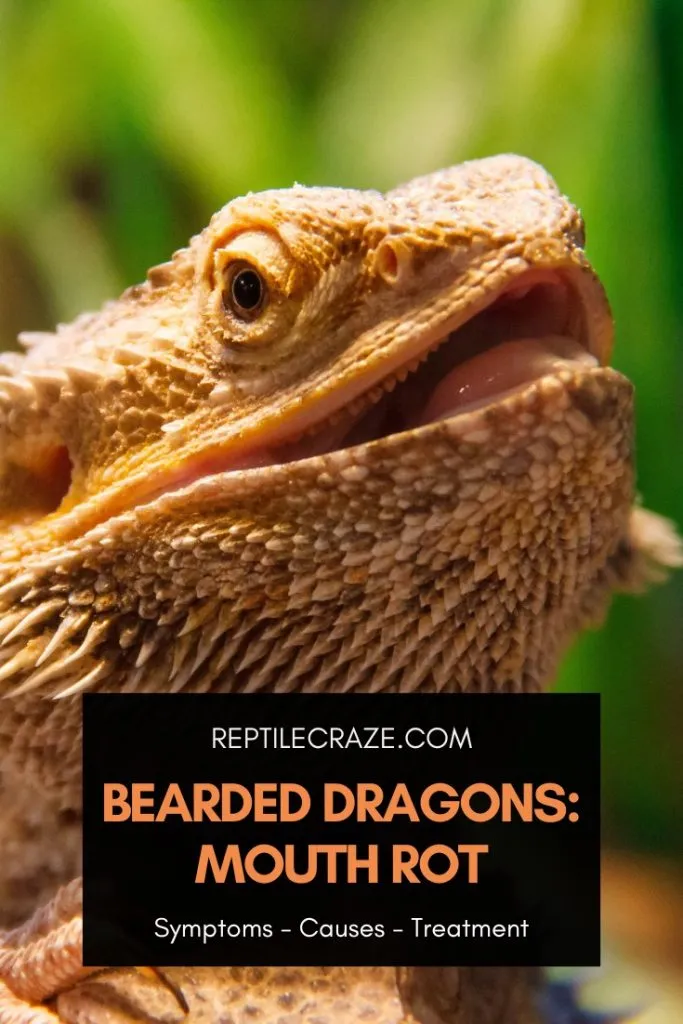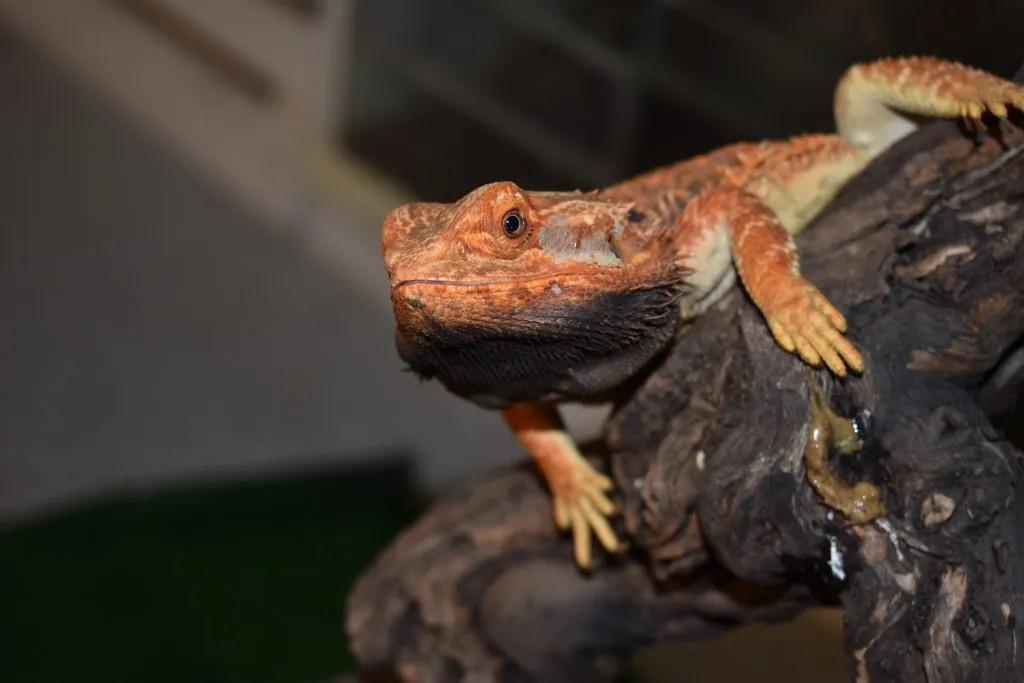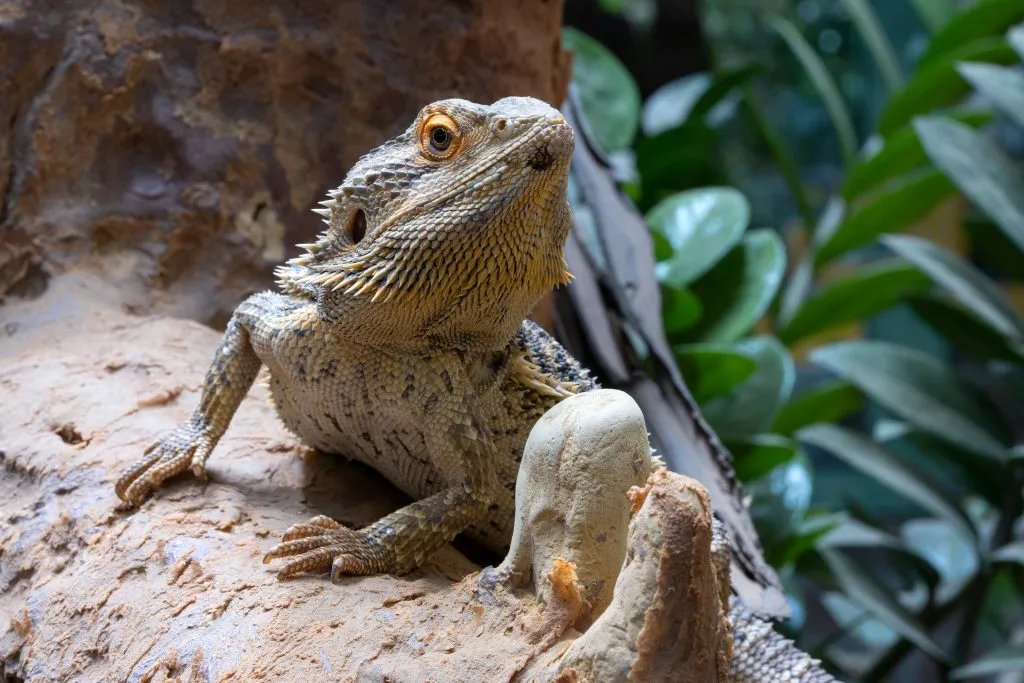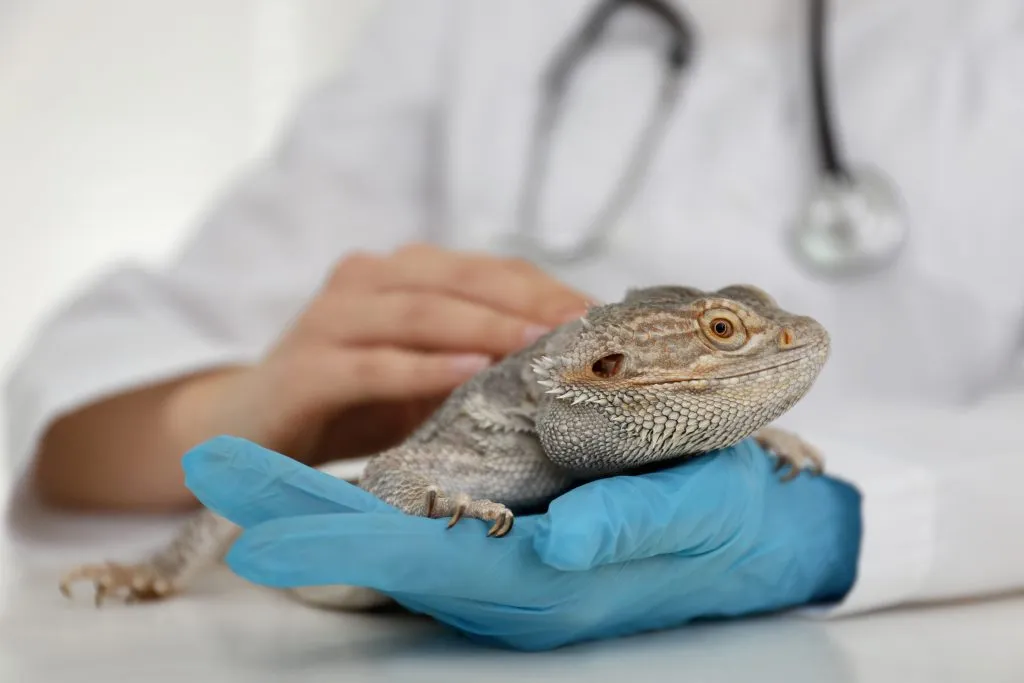
Mouth Rot is a challenging disease to detect and can severely harm Bearded Dragons. Therefore, most owners are interested in collecting valuable information to prevent it and adequately recognize early symptoms once they occur. The question is how to treat this infection and save your pet’s life.
Mouth Rot is a bacterial infection typically occurring in Bearded Dragons due to stress and poor diet. Common reasons also include a dirty
This article will show you what mouth rot in Bearded Dragons is and how to prevent it. You should know to recognize symptoms and treat a disease once it appears.
Table of Contents
What Is Mouth Rot In Bearded Dragons?
Mouth Rot is an infectious and painful stomatitis in various reptiles, including Bearded Dragons. This infection, typical for reptiles in captivity, is caused by gram-negative bacteria, like Aeromonas, in combination with:
- Mycobacterium
- Pseudomonas
- Klebsiella
- Salmonella
Since it appears in lizards with weakened immunity, it can be complicated by an additional viral infection. Some viruses are more often associated with this disease, like:
- Papillomaviridae
- Ranavirus
- Adenovirus
- Herpesviruses
- Picornaviridae
In severe and neglected cases, fungi can complicate the situation or cause spreading infection to the esophagus or lungs.
When the environment, particularly temperature and humidity levels, is inadequate, you can expect pneumonia, sometimes gastrointestinal disturbance, and even fatal outcomes.
Note: If you fear that your bearded dragon is suffering from mouth rot, it is best to bring it to a vet immediately. If you can’t do that, you should at least book an online vet who can tell you what you need to do to help your bearded dragon. You can book an online vet at Vetster!
Bearded Dragon Mouth Rot Causes

As I have already mentioned, mouth rot is an infection caused by gram-negative bacteria and is often complicated by viruses when Bearded Dragon’s immune system is compromised.
Be aware that this infection never occurs out of the blue but results from long-term stress and poor living conditions.
Consequently, weakened immunity makes lizards susceptible to various diseases, including infectious stomatitis.
Tip: Are you worried that your bearded dragon might be dying? Read our article on that here!
Overcrowding
Bearded Dragons enjoy living independently, and keeping more of them together in the same
However, you can expect aggression and intolerance in such a case. Additionally, cohabitation is a common reason for infection spreading, including mouth rot.
Oral injuries
Oral injuries are one of the most common causes of mouth rot in Bearded Dragons. Remember that your lizard can hurt itself while:
- Catching prey
- Scratching its mouth
- Rubbing a head against the
tank wall - Chewing materials found in a terrarium
Be prepared for such situations and give your best to treat any possible wound before it can become complicated.
Poor diet and lack of water
Anorexia is often the first symptom most owners notice. Typically, improper diet leads to a weak body and immunity disturbance, causing stomatitis.
Remember that a lousy diet is not only a lack of valuable nutrients but also excess “junk
Improper temperature and humidity

You may jeopardize your Bearded Dragon’s immune system when keeping it in inadequate living conditions.
That especially applies to a too-cold or overheated
Unclean tank
Most owners are unaware of the importance of terrarium cleanliness. The dirty enclosure can quickly cause various health issues, and mouth rot is at the top of the list.
External parasites
External parasites negatively affect the Bearded Dragons’ immune system and represent a problem to their health. Mouth Rot is only one of the health issues resulting from this condition.
Stress
Stress is a primary underlying condition regarding mouth rot in Bearded Dragons, mainly when you inadequately handle your pet. Moreover, all previously listed causes of this horrible infection are highly stressful for your lizard.
In other words, one or more of the listed reasons result in a stressful environment and may weaken a Bearded Dragon’s immune system, making it susceptible to diseases.
Tip: Also read our article on tail rot in bearded dragons and how you can prevent it.
Bearded Dragon Mouth Rot Symptoms
Even though mouth rot is not so common in Bearded Dragons as in other lizards, you should be careful with your pet and be prepared to notice the first symptoms.
Only that way can you react on time and prevent more severe consequences.
A mitigating factor is that this disease comes with typical and quickly noticeable symptoms, and it is practically impossible to confuse them with any other health issue.
Therefore, take your lizard to the vet as soon as you notice any of these signs of infection:
1. Yellowish patches inside the mouth
These yellowish-grey or whitish-gray patches in the oral cavity are the first symptoms of infectious stomatitis.
They are usually small, but you can be sure your Bearded Dragon will noticeably suffer from this unpleasant condition once it appears.
Be careful once these growths occur since they can bleed and are more or less painful. Some lizards may avoid letting you touch the mouth inside once a disease spread.
Sometimes, patches are difficult to notice inside the lizard’s mouth or even absent, but you can suspect mouth rot based on indirect symptoms.
Any of them is not a warning sign when appearing alone, but a few typical symptoms that simultaneously occur may indicate something is wrong.
2. Reduced appetite or lack of it
Lack of appetite is a symptom of numerous health issues, but combined with bloating and avoiding drinking water can be alarming. In such a case, the best option is to be cautious and ask your vet for advice.
Once the infection appears, your Bearded Dragon will have difficulty eating because of the sore mucous membrane in the mouth.
Since beardies enjoy eating, you should be worried when noticing that it consumes less
3. Refusing to drink water
In most cases, an ill Bearded Dragon will avoid drinking water along with reducing
4. Bloating and swollen head, particularly face

Paradoxically, your lizard will have increased problems with bloating, despite a lack of appetite and a lower amount of ingested
In fact, you can notice bloating and head, face, and gums swelling regardless of whether it has eaten or not.
In most cases, this symptom goes along with patches inside a mouth. However, it is a sign of this particular infection, even when changes in the mouth are absent.
You should go to the vet when your typically gluttonous Bearded Dragon stops eating and suddenly becomes bloated.
5. Swollen or bleeding gums
Bleeding and swelling gums are not typical symptoms of mouth rot, but their existence can show you how advanced the disease is.
6. Broken or loosened teeth
Teeth loosening or even falling out is the most extreme symptom of mouth rot in Bearded Dragons. They are almost always a sign of advanced disease stage.
Loosened and broken teeth prevent regular nutrition and water intake, so you should take your pet to the vet.
There is one more problem. Such teeth are a significant health risk and can be one of the primary causes of diseases like mouth rot besides being a symptom.
7. Excessive and thick saliva and yellow pus inside the mouth
When your Bearded Dragon is seriously ill, you will notice excessive salivation, while saliva is thicker than usual. In neglected cases, it is possible to see mucus or yellow pus inside and around the mouth.
Extreme symptoms
If you fail to notice that your Bearded Dragon suffers from this horrible disease, it can lead to more severe problems, including:
- Skin peeling
- Excretion from nostrils and eyes
- Pneumonia
Note: If your bearded dragon is also making weird noises while breathing, it might be that your beardie is also suffering from a respiratory infection. Here are some noises beardies should and shouldn’t make.
Bearded Dragon Mouth Rot Treatment

The rule of thumb is to take your lizard to the vet as soon as you notice suspicious symptoms indicating mouth rot.
If you can’t do that or don’t live near an exotic vet, book an online vet. Vetster offers 24/7 appointments at affordable rates. Check out Vetster here!
The goal is to start with the treatment immediately to reduce or completely cure the infection, depending on the lizard’s condition.
1. Antibiotics (injections)
Since mouth rot is primarily a bacterial infection, the vet will recommend proper antibiotics for your pet. Since the condition can be severe and oral application can be challenging, they will start the treatment with injections.
2. Antiseptic and supplements
Mouth Rot in Bearded Dragons is a painful infection, so you should be prepared for supplemental feeding.
Besides, it is required to use antiseptics, like Iodine (click here) or Octenisept solution, to disinfect the mucous membrane and stop the microorganism growth.
3. Home remedies
Some home remedies can be highly effective in curing mouth rot, particularly when noticing the infection in the very beginning.
Remember that this treatment type can help when symptoms are still mild, but you shouldn’t cure your pet without consultations with the vet.
Start by mixing a small cup of Betadine or Nolvasan solution with a larger cup of warm water. Then, moisten the cotton swab with this solution and gently rub the affected surface inside the mouth.
Let it sit before rinsing a created layer of the agent and loose pieces of infected tissue.
If you start treatment on time and repeat the process twice a day, symptoms should fade after two days. Otherwise, take your Bearded Dragon to the vet for antibiotic therapy.
The video below shows how to do it on a leopard gecko, but it is the same for bearded dragons.
4. Buildup removing
In some neglected and severe cases, the vet must remove the existing buildup and clean your Bearded Dragon’s teeth. It is also necessary to take out some teeth in particularly severe cases.
5. Surgery
Surgery is the ultimate solution in particularly severe mouth rot infections. The goal is to remove damaged, rotten, and necrotic tissue from the lizard’s mouth.
Be prepared that your Bearded Dragon will require a liquid diet during recovery.
How To Prevent Mouth Rot In Bearded Dragons
Like in most cases, prevention is always a better option than mouth rot treatment in Bearded Dragons. Therefore, you should fulfill some requirements to prevent this horrible infection, like providing the following:
- Clean environment
- Temperature and humidity regulation
- Healthy and balanced diet
- Enough clean water
- Brushing teeth
- Stress prevention
- Ample space and places to hide and rest
- Preventing overpopulation
- Annual veterinarian checkups
- Regular monitoring for possible symptoms
- Enchi Ball Python: A Unique and Stunning Morph of Python regius - March 27, 2025
- Emerald Tree Monitor: The Enigmatic Green Guardian of the Rainforest - March 26, 2025
- The Egyptian Cobra (Naja haje): A Fascinating Serpent - March 25, 2025
